Impacts of River Engineering on Multi-Decadal Water Discharge of the Mega-Changjiang River
Abstract
1. Introduction
2. Data and Methods
2.1. Data Collection
2.2. Methods
3. Results
3.1. Decadal Characteristics of Changjiang Water Discharge
3.2. Pattern of Seasonal Water Discharge Variability
3.3. Trends in Monthly Water Discharge Variability
3.4. Abrupt Changes in Water Discharges
4. Discussion
4.1. Influence of Precipitation
4.2. Influence of the Dams
4.3. Influence of Water Withdrawal
4.4. Sustainability in the Future
5. Conclusions
- During the period of 1954–2014, there was a minor decrease in decadal water discharge in the upper Changjiang catchment and unremarkable variation in the middle and lower Changjiang catchments. The mean discharge ratio of the flood season to the dry season decreased by 0.8, 0.5, and 0.4 from the 1960s to 2010s in the upper, middle, and lower Changjiang catchments, respectively, indicating that the seasonality of the mega-Changjiang discharge was decreasing. This resulted in a dramatic discharge decrease in October and remarkable increases from January to March.
- Precipitation dominated the annual discharge from the Changjiang River to the sea, which was also responsible for the intra-annual fluctuations in water discharge.
- As reservoir projects were put into operation, discharges decreased significantly in the flood season (especially in October) and increased in the dry season (especially from January to March). With water withdrawals and consumption becoming increasingly intensive, these two actions accounted for approximately 22% of the annual mean runoff of the Changjiang River in 2017. We therefore estimated that in 2028, the severe issue of saltwater intrusion will occur in the Changjiang Estuary, when the monthly mean discharge at Datong is less than the threshold of 11,000 m3/s. To make things worse, the capacity of SNWDP will reach 1600 m3/s in 2030, so the situation will be exacerbated.
Supplementary Materials
Author Contributions
Funding
Acknowledgments
Conflicts of Interest
References
- Haddeland, I.; Heinke, J.; Biemans, H.; Eisner, S.; Flörke, M.; Hanasaki, N.; Konzmann, M.; Ludwig, F.; Masaki, Y.; Schewe, J.; et al. Global water resources affected by human interventions and climate change. Proc. Natl. Acad. Sci. USA 2013, 111, 3251–3256. [Google Scholar] [CrossRef] [PubMed]
- Largier, J.L.; Hollibaugh, J.T.; Smith, S.V. Seasonally hypersaline estuaries in Mediterranean-climate regions. Estuar. Coast. Shelf. Sci. 1997, 45, 789–797. [Google Scholar] [CrossRef]
- Lu, X.X. Vulnerability of water discharge of large Chinese rivers to environmental changes: An overview. Reg. Environ. Change 2004, 4, 182–191. [Google Scholar] [CrossRef]
- Nilsson, C.; Reidy, C.A.; Dynesius, M.; Revenga, C. Fragmentation and flow regulation of the world’s large river systems. Science 2005, 308, 405–408. [Google Scholar] [CrossRef] [PubMed]
- Steffen, W.; Crutzen, J.; McNeill, J.R. The Anthropocene: Are humans now overwhelming the great forces of nature? Ambio 2007, 36, 614–621. [Google Scholar] [CrossRef]
- Lin, Y.; Wei, X. The impact of large-scale forest harvesting on hydrology in the Willow watershed of Central British Columbia. J. Hydrol. 2008, 359, 141–149. [Google Scholar] [CrossRef]
- Genz, F.; Luz, L.D. Distinguishing the effects of climate on discharge in a tropical river highly impacted by large dams. Hydrol. Sci. J. 2012, 57, 1020–1034. [Google Scholar] [CrossRef]
- Dai, Z.; Du, J.; Tang, Z.; Ou, S.; Brody, S.; Mei, X.; Jing, J.; Yu, S. Detection of linkage between solar and lunar cycles and runoff of the world’s large rivers. Earth Space Sci. 2019, 6, 914–930. [Google Scholar] [CrossRef]
- Grill, G.; Lehner, B.; Thieme, M.; Geenen, B.; Tickner, D.; Antonelli, F.; Babu, S.; Borrelli, P.; Cheng, L.; Crochetiere, H.; et al. Mapping the world’s free-flowing rivers. Nature 2019, 569, 215–221. [Google Scholar] [CrossRef]
- McClelland, J.W.; Holmes, R.M.; Peterson, B.J.; Stieglitz, M. Increasing river discharge in the Eurasian Arctic: Consideration of dams, permafrost thaw, and fires as potential agents of change. J. Geophys. Res. Atmos. 2004, 109, 1–12. [Google Scholar] [CrossRef]
- Botter, G.; Basso, S.; Porporato, A.; Rodriguez-Iturbe, I.; Rinaldo, A. Natural streamflow regime alterations: Damming of the Piave river basin (Italy). Water Resour Res. 2010, 46, 1–14. [Google Scholar] [CrossRef]
- Burke, M.; Jorde, K.; Buffington, J.M. Application of a hierarchical framework for assessing environmental impacts of dam operation: Changes in streamflow, bed mobility and recruitment of riparian trees in a western North American river. J. Environ. Manag. 2009, 90, 224–236. [Google Scholar] [CrossRef] [PubMed]
- Mix, K.; Groeger, A.W.; Lopes, V.L. Impacts of dam construction on streamflows during drought periods in the Upper Colorado River Basin, Texas. Lakes Reserv. Res. Manag. 2016, 21, 329–337. [Google Scholar] [CrossRef]
- Grafton, R.Q.; Pittock, J.; Davis, R.; Williams, J.; Fu, G.; Warburton, M.; Udall, B.; McKenzie, R.; Yu, X.; Che, N.; et al. Global insights into water resources, climate change and governance. Nat. Clim. Change 2013, 3, 315–321. [Google Scholar] [CrossRef]
- Dai, Z.; Chu, A.; Du, J.; Stive, M.; Hong, Y. Assessment of extreme drought and human interference on baseflow of the Yangtze River. Hydrol. Process. 2010, 24, 749–757. [Google Scholar] [CrossRef]
- Mei, X.; Dai, Z.; Van Gelder, P.H.; Gao, J. Linking three gorges dam and downstream hydrological regimes along the Yangtze river, China. Earth Space Sci. 2015, 2, 94–106. [Google Scholar] [CrossRef]
- Dai, Z.; Du, J.; Li, J.; Li, W.; Chen, J. Runoff characteristics of the Changjiang River during 2006: Effect of extreme drought and the impounding of the Three Gorges Dam. Geophys. Res. Lett. 2008, 35, 1–6. [Google Scholar] [CrossRef]
- Chen, X.; Zong, Y.; Zhang, E.; Xu, J.; Li, S. Human impacts on the Changjiang (Yangtze) River basin, China, with special reference to the impacts on the dry season water discharges into the sea. Geomorphology 2001, 41, 111–123. [Google Scholar] [CrossRef]
- Dai, Z.; Liu, J.T.; Xiang, Y. Human interference in the water discharge of the Changjiang (Yangtze River), China. Hydrol. Sci. J. 2015, 60, 1770–1782. [Google Scholar] [CrossRef]
- Xu, K.; Milliman, J.D.; Yang, Z.; Wang, H. Yangtze sediment decline partly from Three Gorges Dam. Eos. Trans. AGU 2006, 87, 185–190. [Google Scholar] [CrossRef]
- Dai, Z.; Chu, A.; Stive, M.; Zhang, X.; Yan, H. Unusual salinity conditions in the Yangtze Estuary in 2006: Impacts of an extreme drought or of the three gorges dam? Ambio 2011, 40, 496–505. [Google Scholar] [CrossRef] [PubMed]
- PRCHR. The People’s Republic of China Hydraulic Re-Investigations Report; Chinese Electrical Power Press: Beijing, China, 2004. [Google Scholar]
- Chen, Z.; Li, J.; Shen, H.; Zhanghua, W. Yangtze River of China: Historical analysis of discharge variability and sediment flux. Geomorphology 2001, 41, 77–91. [Google Scholar] [CrossRef]
- Yang, S.; Gao, A.; Hotz, H.M.; Zhu, J.; Dai, S.B.; Li, M. Trends in annual discharge from the Yangtze River to the sea (1865–2004). Hydrol. Sci. J. 2005, 50, 825–836. [Google Scholar] [CrossRef]
- Yang, Z.; Wang, H.; Saito, Y.; Milliman, J.D.; Xu, K.; Qiao, S.; Shi, G. Dam impacts on the Changjiang (Yangtze) River sediment discharge to the sea: The past 55 years and after the Three Gorges Dam. Water Resour. Res. 2006, 42, 1–10. [Google Scholar] [CrossRef]
- Tian, J.; Chang, J.; Zhang, Z.; Wang, Y.; Wu, Y.; Jiang, T. Influence of Three Gorges Dam on downstream low flow. Water 2019, 11, 65. [Google Scholar] [CrossRef]
- Yu, M.; Liu, X.; Li, Q. Impacts of the Three Gorges Reservoir on its immediate downstream hydrological drought regime during 1950–2016. Nat. Hazards 2019, 96, 413–430. [Google Scholar] [CrossRef]
- Yang, S.L.; Liu, Z.; Dai, S.B.; Gao, Z.X.; Zhang, J.; Wang, H.J.; Luo, X.X.; Wu, C.S.; Zhang, Z. Temporal variations in water resources in the Yangtze River (Changjiang) over the Industrial Period based on reconstruction of missing monthly discharges. Water Resour. Res. 2010, 46, 1–13. [Google Scholar] [CrossRef]
- Morlet, J.; Arens, G.; Fourgeau, E.; Giard, D. Wave propagation and sampling theory—Part II: Sampling theory and complex waves. Geophysics 1982, 47, 222–236. [Google Scholar] [CrossRef]
- Sang, Y.F. Improved wavelet modeling framework for hydrologic time series forecasting. Water Resour. Manag. 2013, 27, 2807–2821. [Google Scholar] [CrossRef]
- Smith, L.C. Trends in russian arctic river-ice formation and breakup, 1917 to 1994. Phys. Geogr. 2000, 21, 46–56. [Google Scholar] [CrossRef]
- Xu, K.; Milliman, J.D.; Xu, H. Temporal trend of precipitation and runoff in major Chinese Rivers since 1951. Glob. Planet. Chang. 2010, 73, 219–232. [Google Scholar] [CrossRef]
- Gerstengarbe, F.W.; Werner, P.C. Estimation of the beginning and end of recurrent events within a climate regime. Clim. Res. 1999, 11, 97–107. [Google Scholar] [CrossRef]
- Viles, H.A.; Goudie, A.S. Interannual, decadal and multidecadal scale climatic variability and geomorphology. Earth-Sci. Rev. 2003, 61, 105–131. [Google Scholar] [CrossRef]
- Philander, S.G. El Niño and La Niña predictable climate fluctuations. Rep. Prog. Phys. 1999, 62, 123–142. [Google Scholar] [CrossRef]
- Wei, W.; Chang, Y.; Dai, Z. Streamflow changes of the Changjiang (Yangtze) River in the recent 60 years: Impacts of the East Asian summer monsoon, ENSO, and human activities. Quat. Int. 2014, 336, 98–107. [Google Scholar] [CrossRef]
- Dai, Z.; Mei, X.; Darby, S.E.; Lou, Y.; Li, W. Fluvial sediment transfer in the Changjiang (Yangtze) river-estuary depositional system. J. Hydrol. 2018, 566, 719–734. [Google Scholar] [CrossRef]
- Yu, M.; Li, Q.; Lu, G.; Cai, T.; Xie, W.; Bai, X. Investigation into the impacts of the Gezhouba and the Three Gorges Reservoirs on the flow regime of the yangtze river. J. Hydrol. Eng. 2013, 18, 1098–1106. [Google Scholar] [CrossRef]
- Kattel, G.R.; Shang, W.; Wang, Z.; Langford, J. China’s south-to-north water diversion project empowers sustainable water resources system in the north. Sustainability 2019, 11, 3735. [Google Scholar] [CrossRef]
- CSNWDPC. China South-to-North. Water Diversion Project Construction Yearbook (in China); China Electric Power Press: Beijing, China, 2010. [Google Scholar]
- Best, J. Anthropogenic stresses on the world’s big rivers. Nat. Geosci. 2019, 12, 7–21. [Google Scholar] [CrossRef]
- Zhang, E.; Savenije, H.H.G.; Chen, S.; Chen, J. Water abstraction along the lower Yangtze River, China, and its impact on water discharge into the estuary. Phys. Chem. Earth 2012, 47. [Google Scholar] [CrossRef]
- Xu, K.; Zhu, J.; Gu, Y. Impact of the eastern water diversion from the south to the north project on the saltwater intrusion in the Changjiang Estuary in China. Acta Oceanol. Sin. 2012, 31, 47–58. [Google Scholar] [CrossRef]
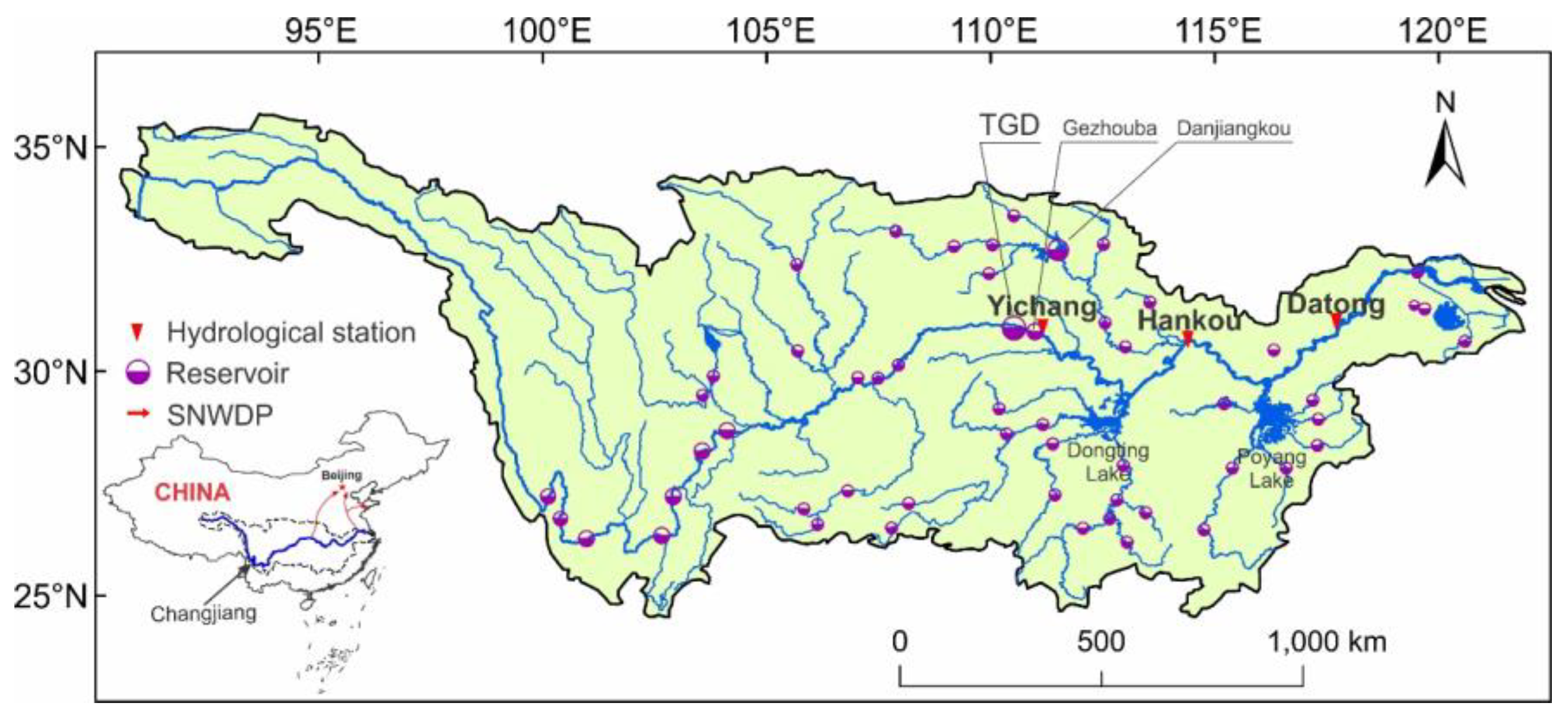
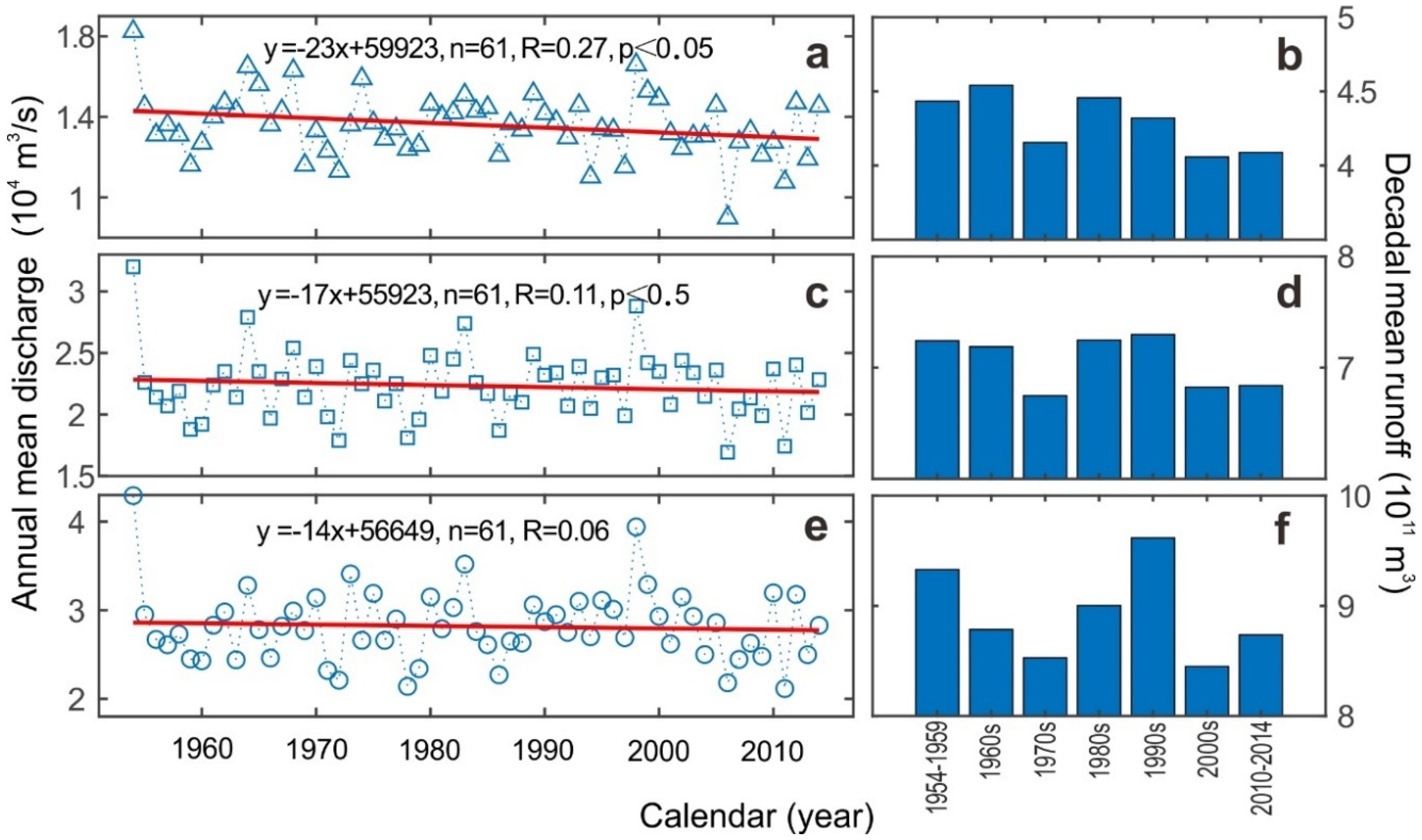
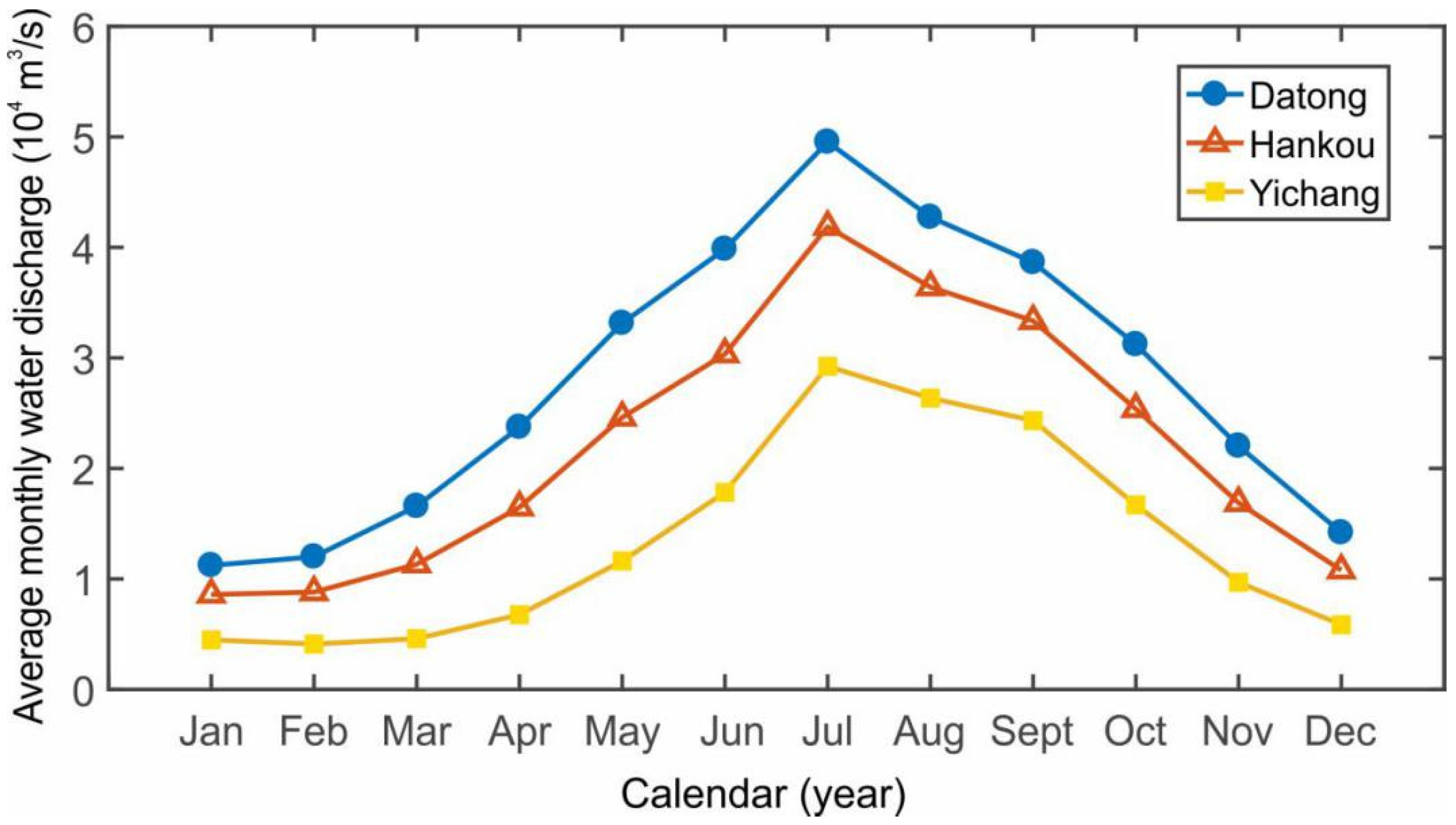
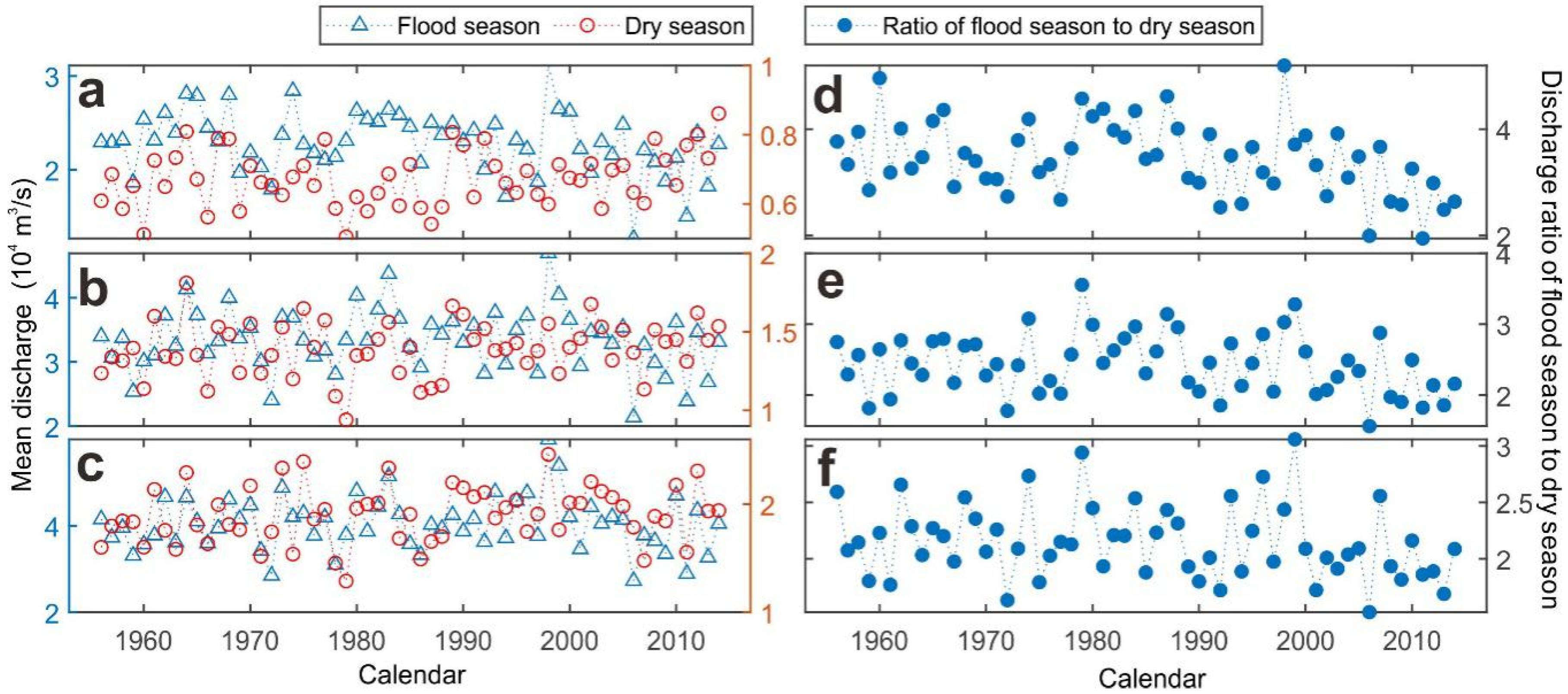
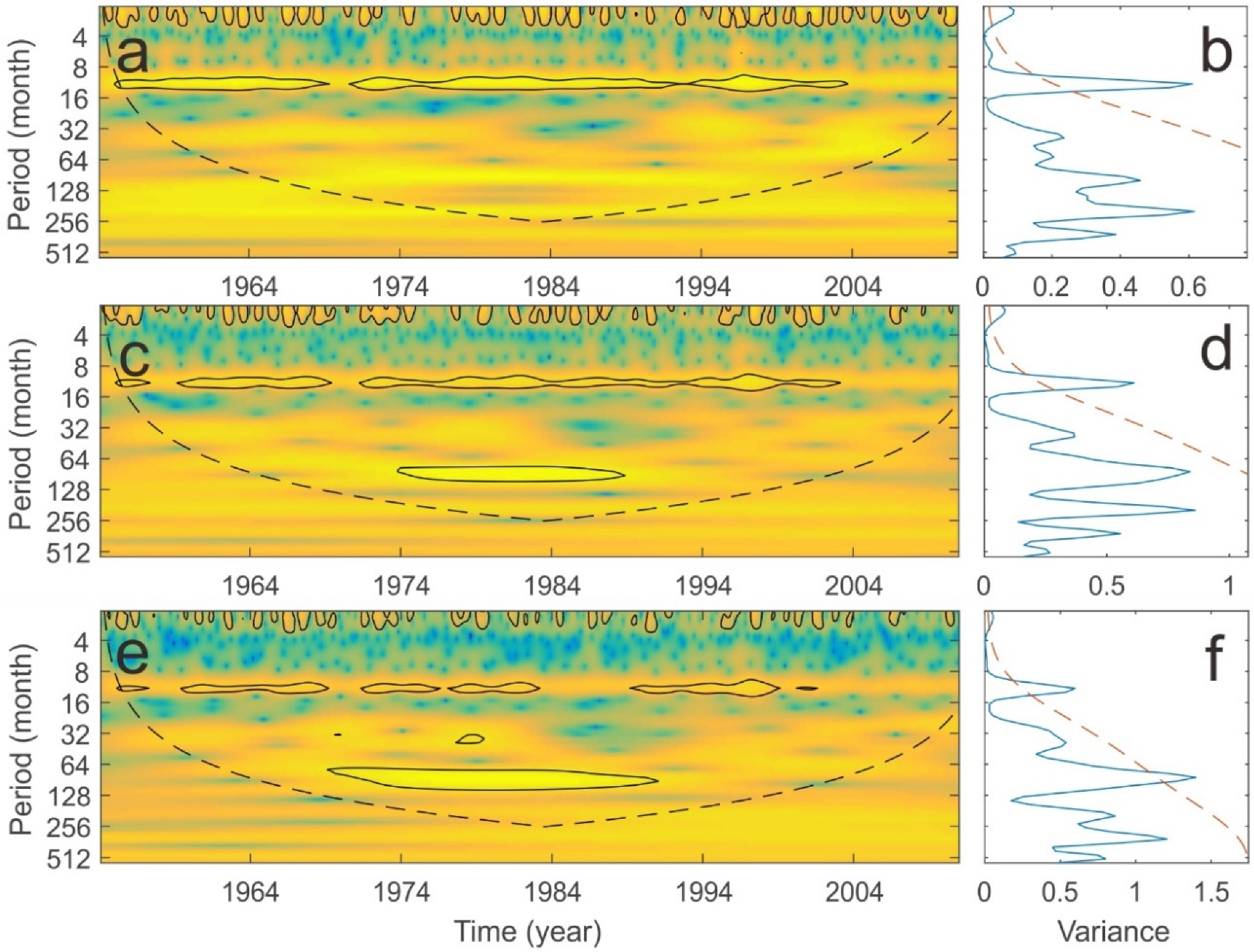
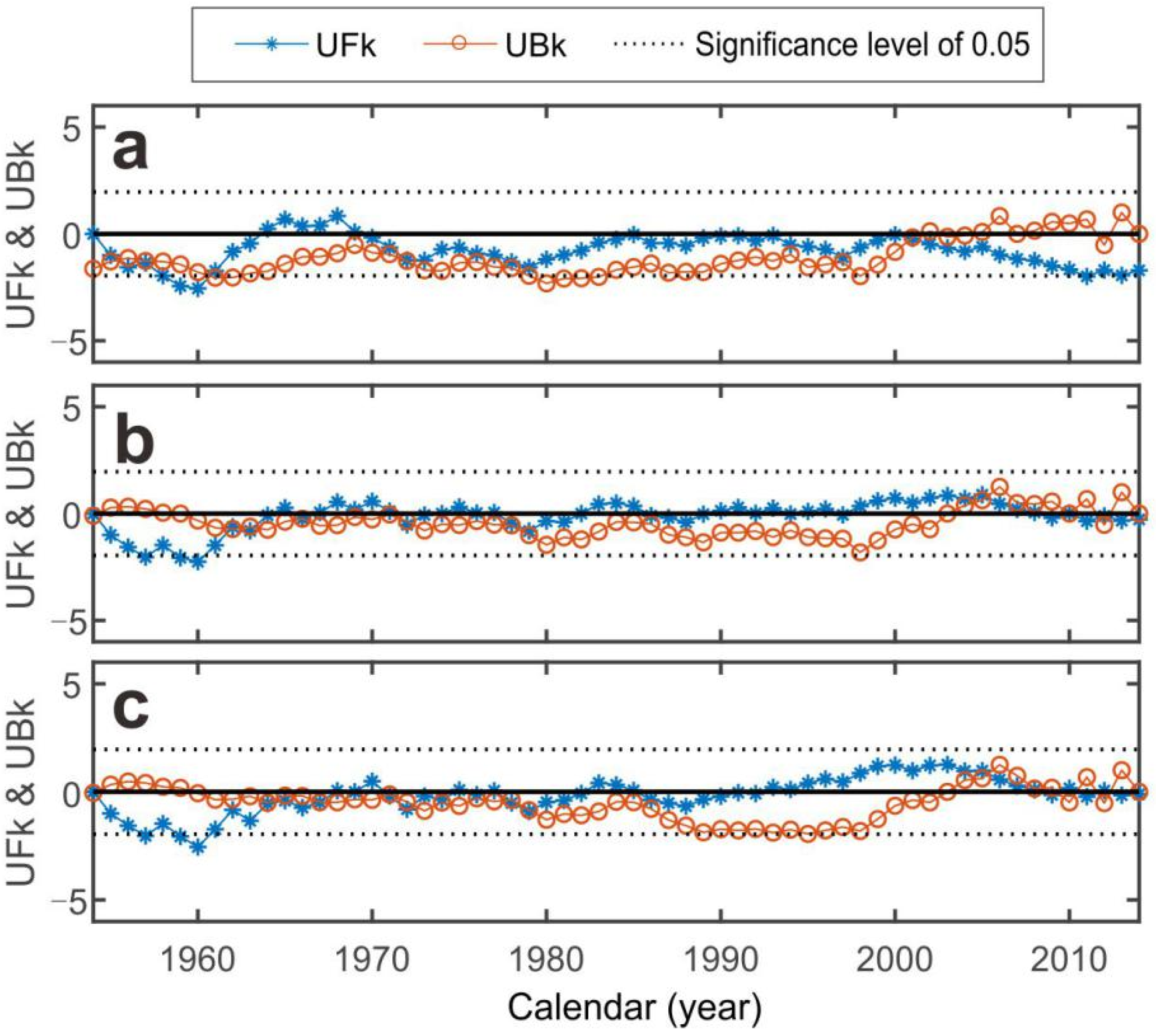

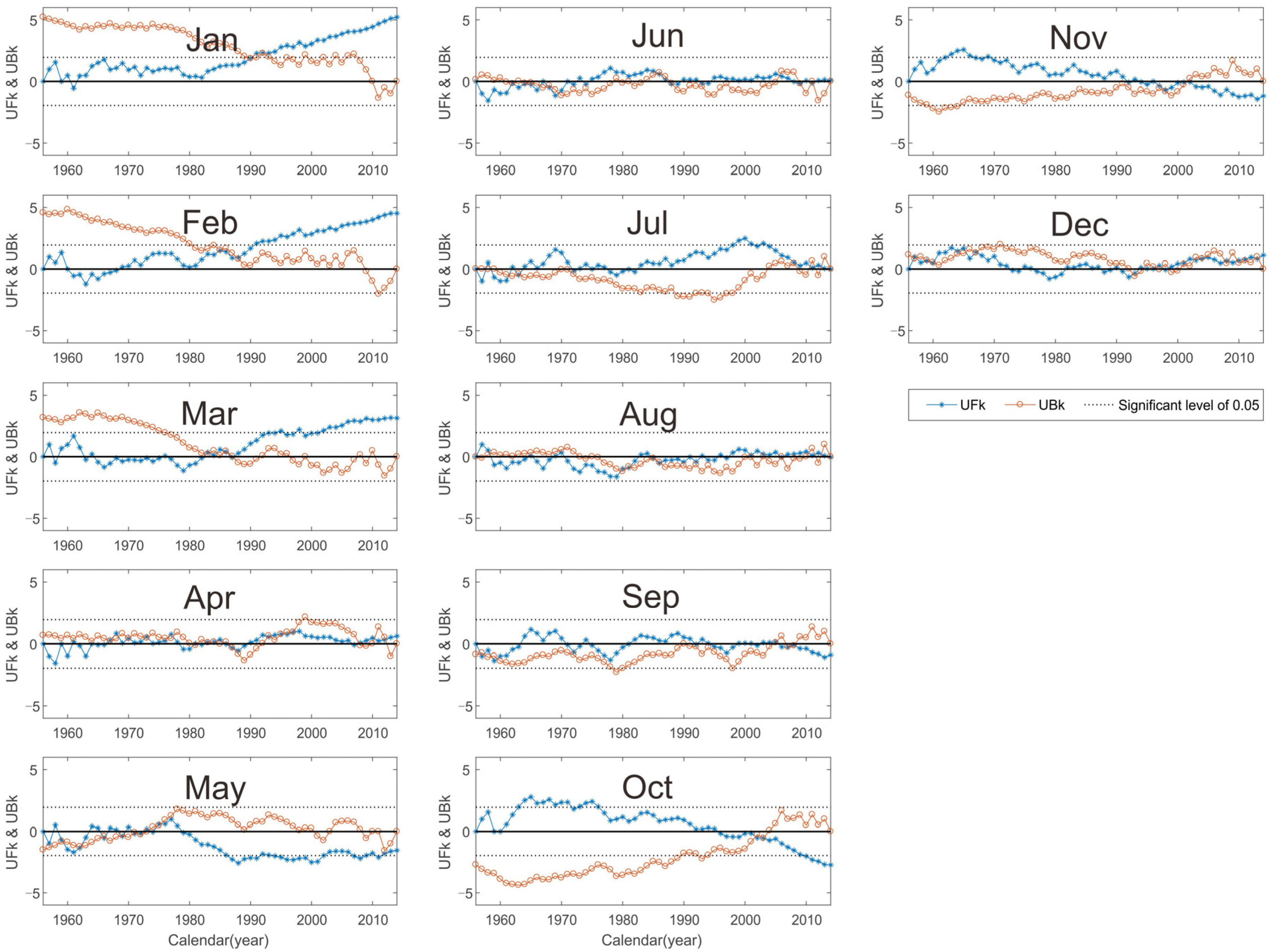
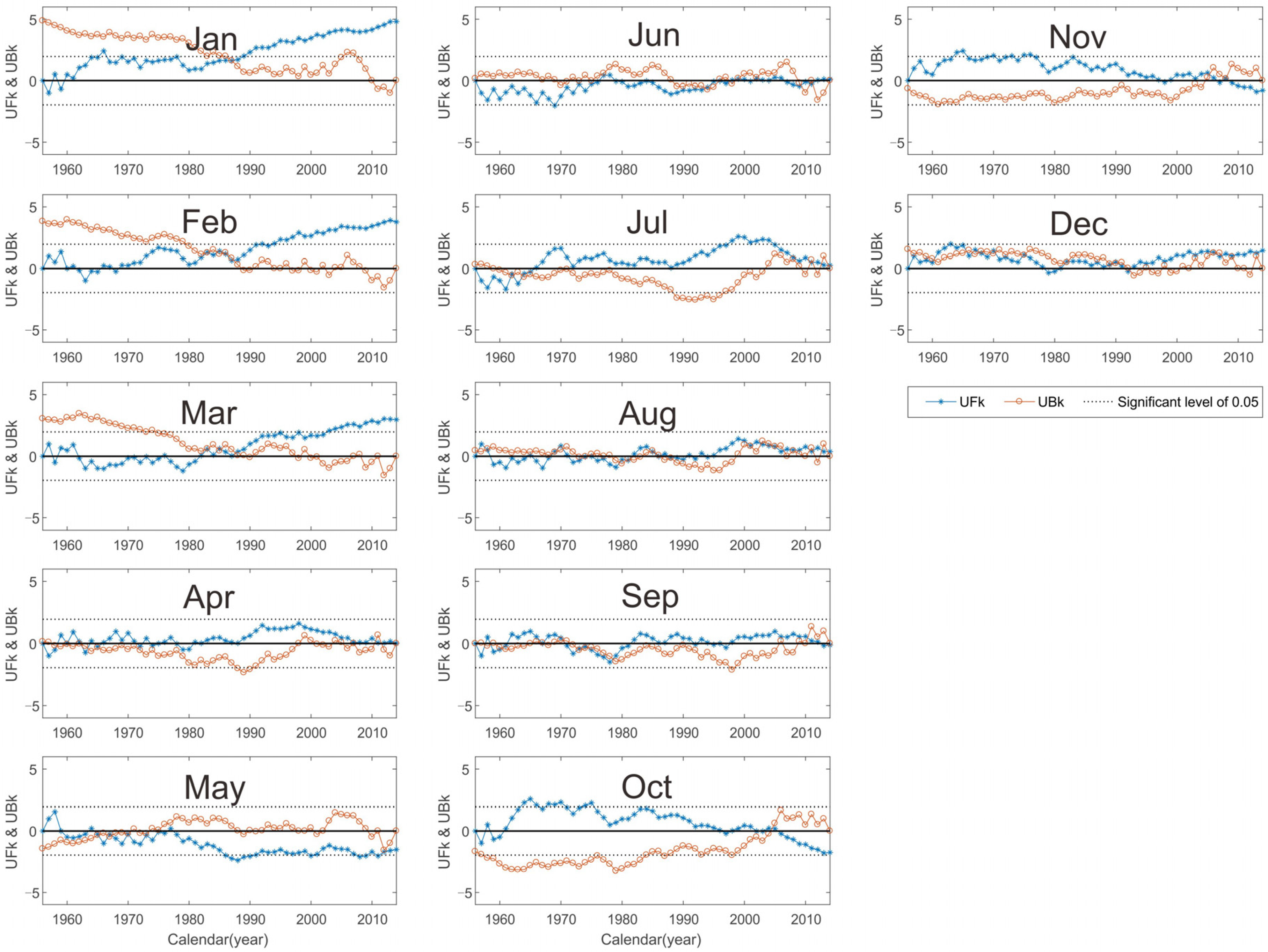
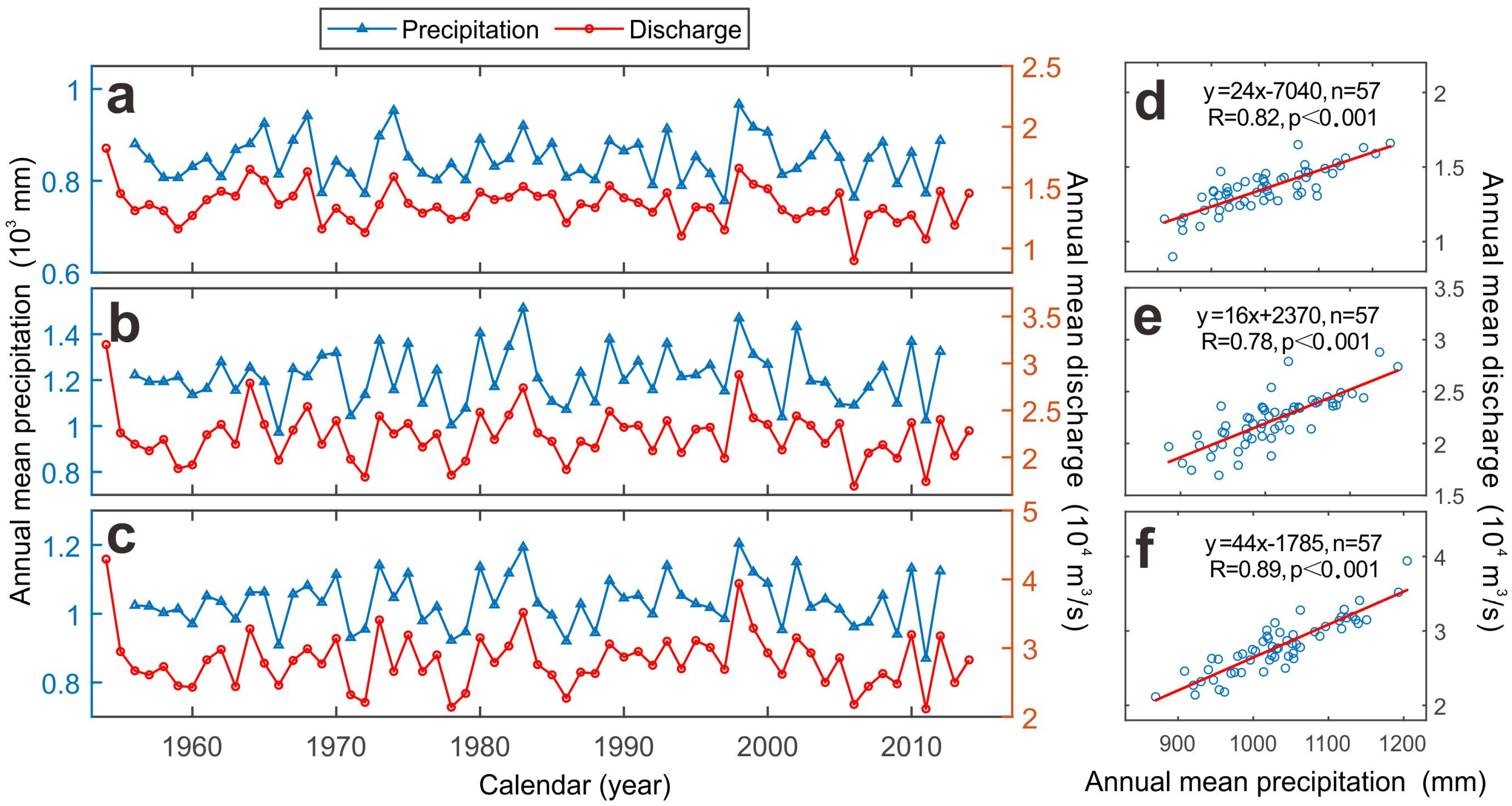


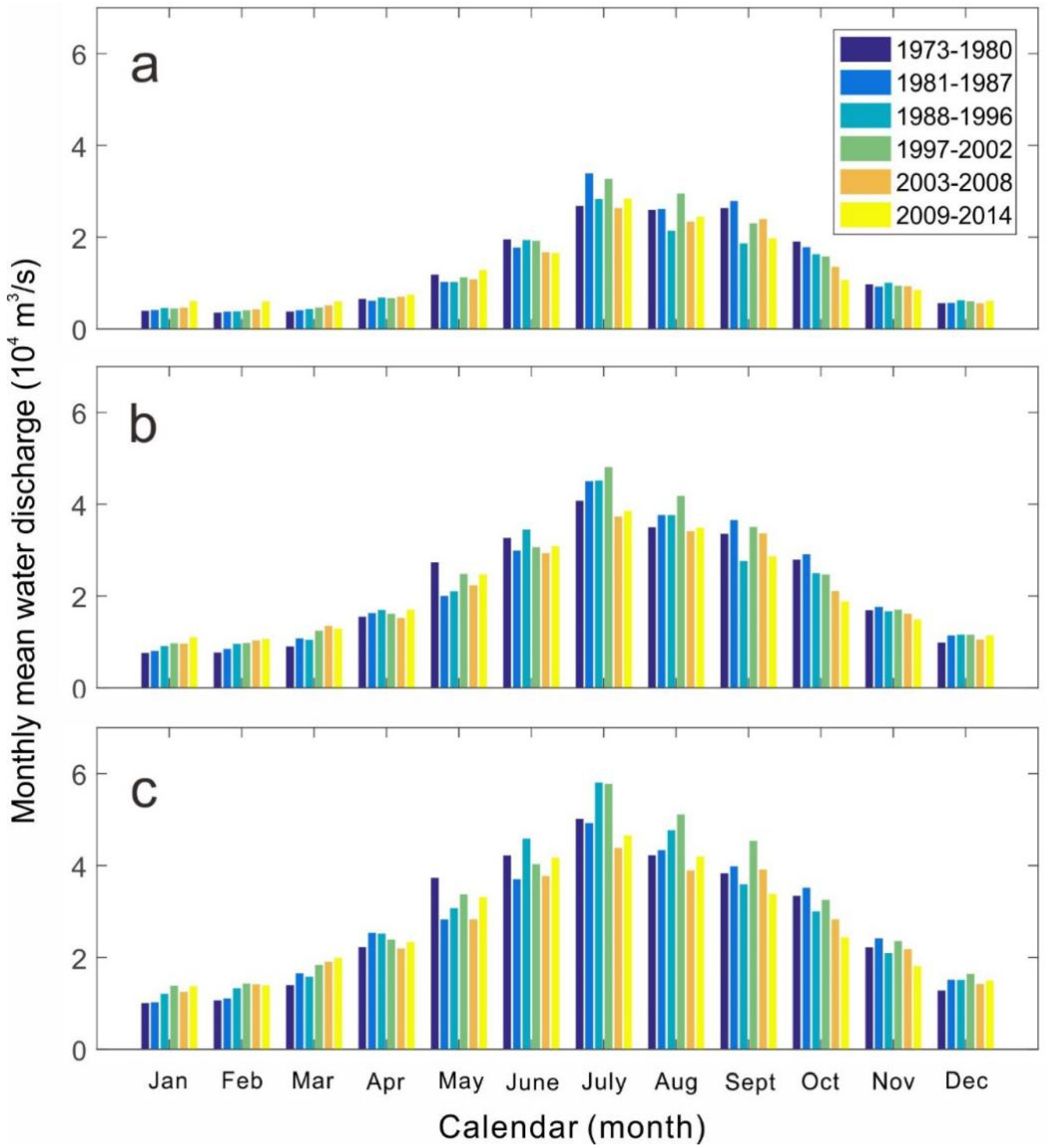

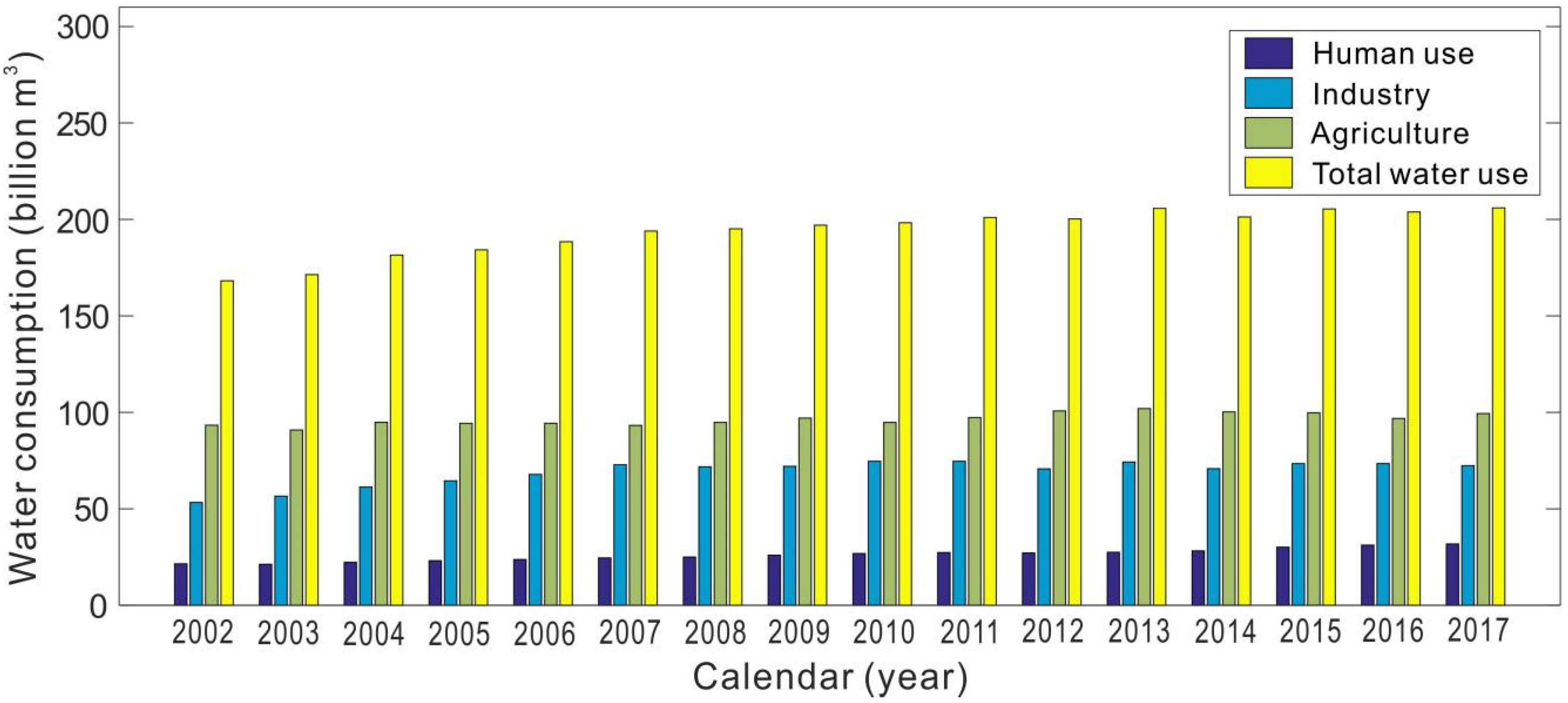
| Gauging Station | Time Span | Frequency | |
|---|---|---|---|
| Discharge | Yichang | Jan. 1954–Dec. 2014 | Yearly |
| Hankou | Jan. 1954–Dec. 2014 | Yearly | |
| Datong | Jan. 1954–Dec. 2014 | Yearly | |
| Yichang | Jan. 1956–Dec. 2014 | Monthly | |
| Hankou | Jan. 1956–Dec. 2014 | Monthly | |
| Datong | Jan. 1956–Dec. 2014 | Monthly | |
| Water usage | Basin-wide | 2002–2017 | Yearly |
| Yichang | Hankou | Datong | N | |
|---|---|---|---|---|
| Annual | −3.34 | −0.37 | −0.16 | 61 |
| January | 8.91 | 10.45 | 9.68 | 59 |
| February | 9.96 | 9.09 | 7.60 | 59 |
| March | 7.92 | 6.33 | 6.01 | 59 |
| April | 3.94 | 1.31 | 0.17 | 59 |
| May | −0.35 | −3.04 | −2.96 | 59 |
| June | −1.02 | 0.25 | 0.27 | 59 |
| July | −0.90 | 0.00 | 0.60 | 59 |
| August | −3.31 | −0.07 | 0.85 | 59 |
| September | −2.66 | −1.74 | −0.13 | 59 |
| October | −7.08 | −5.44 | −3.41 | 59 |
| November | −3.43 | −2.32 | −1.41 | 59 |
| December | 0.12 | 2.30 | 3.00 | 59 |
© 2020 by the authors. Licensee MDPI, Basel, Switzerland. This article is an open access article distributed under the terms and conditions of the Creative Commons Attribution (CC BY) license (http://creativecommons.org/licenses/by/4.0/).
Share and Cite
Ma, B.; Pang, W.; Lou, Y.; Mei, X.; Wang, J.; Gu, J.; Dai, Z. Impacts of River Engineering on Multi-Decadal Water Discharge of the Mega-Changjiang River. Sustainability 2020, 12, 8060. https://doi.org/10.3390/su12198060
Ma B, Pang W, Lou Y, Mei X, Wang J, Gu J, Dai Z. Impacts of River Engineering on Multi-Decadal Water Discharge of the Mega-Changjiang River. Sustainability. 2020; 12(19):8060. https://doi.org/10.3390/su12198060
Chicago/Turabian StyleMa, Binbin, Wenhong Pang, Yaying Lou, Xuefei Mei, Jie Wang, Jinghua Gu, and Zhijun Dai. 2020. "Impacts of River Engineering on Multi-Decadal Water Discharge of the Mega-Changjiang River" Sustainability 12, no. 19: 8060. https://doi.org/10.3390/su12198060
APA StyleMa, B., Pang, W., Lou, Y., Mei, X., Wang, J., Gu, J., & Dai, Z. (2020). Impacts of River Engineering on Multi-Decadal Water Discharge of the Mega-Changjiang River. Sustainability, 12(19), 8060. https://doi.org/10.3390/su12198060







